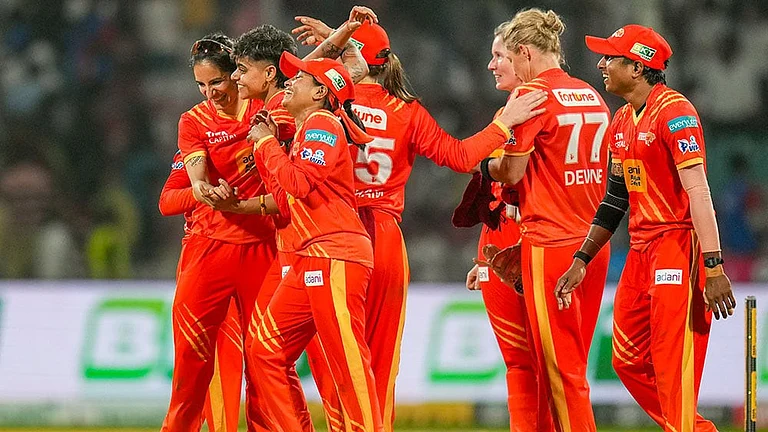Growing up, I remember the fanatic emphasis on endogamous marriages. “Zachh zaet pachh paet” (connoting birds of the same feather flock together) explained it all. As an 11-year-old, I thought endogamy only existed in Sayyids — until I met Ruqaya.
Ruqaya and I went to the same tuition class in 8th standard. Her eldest sister could not get married with her long-term romantic partner because of the caste difference. The boy hailed from Lone caste, not the ‘aseel’ —pure/original— Lone or the ‘Khojeh’ —upper-class, usually at an intergenerational level— Lone, but the ‘greest’ Lone —landless tiller. Ruqaya belonged to the Sheikh caste, the upper caste Sheikhs, not the Dalit Sheikhs.
At that age, I could not grasp the complexity of such a bipolar binary of a similar caste name, with a history of different occupational specialisations and a matrix of social purity. With an increased access to education and interactions, there were a myriad of narratives that emerged about caste and caste-consciousness.
The interesting premise remained that no caste self-describes itself as low, except for a few castes. These castes are the historically marginalised groups that have worked in ‘unclean’ and ‘menial’ jobs. Joel Lee writes that the degree of treatment of different stigmatised Muslim communities or the use of labels, such as Dalit, Pasmanda, and backward is debatable. The irrefutable discriminated community across literature on caste among Muslims has been the sanitation worker that forms a class apart and is subjected to social exclusion and marginalisation.
So, we might continue debating who is or are the upper castes among Muslims in Kashmir, or drawing a pyramid like Bashir Dabla did for understanding caste-hierarchies among Kashmiri Muslims, but what is historically established is that who are the low caste groups.
In official parlance, The Jammu and Kashmir Reservation Act, 2004 defines the ‘socially and educationally backward classes’ as social castes — other than Schedule Caste and Schedule Tribes). The sub-categorisation of social castes is ‘weak and underprivileged classes.’
The social castes are the occupational castes and they include Shupri Wattal — shoe repairers working without the aid of machines, sweepers — Bangies Khakrobes, and some sub-castes among the Hanji community such as fishermen, to name a few. The Act grants 2 per cent reservation for social castes in employment and professional institutes. They are also termed as ‘Other Social Castes’ (OSC), so they are not considered synonymous with Scheduled Castes.
The Sheikh community in Kashmir, that also falls under the social caste categorisation, is employed in sanitation work, cobbling, and other ‘unclean’ jobs. The community faces a complex and layered experience of socio-cultural and economic deprivation. The section below explores the ways in which the Sheikh community navigates and resists this systemic oppression, attempting to reclaim their dignity and establish themselves as equal members of society.
Sheikh community’s struggle against invisibilisation
The Sheikh community is severely confronted by lack of economic opportunities and the necessary infrastructural as well as bureaucratic support. While invisibilising the filth of the society, the Dalit worker gets invisibilised in the process. This invisibilisation is reflected through administrative apathy, dilapidated ghettoised residential areas, and discriminatory social and cultural sensibility as well as practices.
A sanitation workers from Habba Kadal says, “We form a critical part of the society in terms of achieving tasks which are deemed as deplorable and unclean. If someone from any other caste group is even given Rs 50,000 for a month, will they clean trenches and streets? Never!”
This ‘never’ significantly embodies the de facto hierarchy in place, wherein certain communities are ascribed to conduct the culturally-constructed dirty jobs. At the same time, this —and multiple narratives that I heard during my field work— point toward the attempts at reclaiming dignity at a social level. In conversation with the Dalit workers from downtown and several municipalities across Kashmir, one gets the sense of a resilience to alter such a social consciousness. One of the frequent remarks is, “We are all Muslims, and equal in the eyes of Allah.”
This reminder is an attempt to establish oneself equal at a social level, worthy of respect and dignity like any other profession. On a similar note, Joel Lee’s work on the Halalkhor community in Uttar Pradesh explores how the concept of Halalkhor —one who earns an honest living— is used by Dalit Muslims as a resistance against the dominant ideology of upper-caste Muslims and to foster the idea of a more egalitarian Islamic community.
In words of one of the sanitation workers employed with the Srinagar municipality: “People who misbehave, drink, and do not follow Islam are Wattals. Someone who is illiterate will dare to refer to our community as Wattal now. Otherwise, we are Sheikhs. That is our surname.”
Such an emphasis on adopting the surname of Sheikh is also an attempt at social mobility where the Sheikh surname seems more respectable and acceptable for the community. Imtiaz Ahmed engaged with the idea of ‘Ashrafisation’ as a critical strategy for gaining upward mobility. Ashrafisation entails the adoption of upper caste surnames. This process has been witnessed among the Sheikh community in Kashmir, who disassociated with the derogatory history of Wattal.
The Sheikh community’s struggle for recognition and dignity is an important aspect to consider when studying caste among Muslims in Kashmir. Despite the common belief that caste does not exist in Islam, the use of caste slurs in derogatory contexts and the prevalence of endogamy among Muslims in Kashmir suggest the presence of a systemic discriminatory caste system. Through the politics of recognition, it is crucial to understand the entrenched hegemony of dominant groups and the ways in which subjugated groups resist and reclaim their dignity. The narratives of the Sheikh community reflect this struggle and provide insight into the socio-cultural and economic deprivation faced by those working in ‘unclean’ jobs.
The Sheikh community is often invisible to society and discriminated against in terms of infrastructural and bureaucratic support. However, through the narratives of the community, one understands the resilience and attempts to reclaim dignity. Adopting the surname Sheikh and a constant reminder about the egalitarianism in Islam are some of the navigational strategies at reclaiming dignity. The political and social context of Kashmir also offers significant insight into studying caste among Muslims.
At a macrolevel of theorisation, it is a departure from the idea of a monolithic Kashmiri Muslim that is neither grounded in a romanticised construction of heaven on Earth, nor in decades of construction of an unruly and militant Kashmiri adamant on dissolving the heaven and national imagination. Similarly, in my earlier conversations from 2018 with Kashmiri colleagues, friends, acquaintances, and upper-caste field interlocutors —from a diversity of caste groups, such as, Mir, Sayyids, Wani, Sheikh, Khan, Lone, Malik, Bhat, Zargar, Dar, etc— about the existence of caste among Muslims in Kashmir, the most frequent response was “caste does not exist in Islam”.
Despite pointing to a very common phenomenon of endogamy among Muslims in Kashmir, the argument never drew strong foundations, because there would be abundant examples in the urban context of class overruling caste. However, the normalised usage of caste slurs Wattul and Haenz (caste names) in a derogatory context became an essential, however primitive, inroad to establish the presence of a systemic discriminatory caste system for a ‘non-academic’ audience.
For most of the academic audience, the constant —and almost compulsive— juxtaposition with the Hindu caste order could be the only befitting model to elaborate on caste among Muslims in general and Kashmiri Muslims in particular. One of the most common methods has been to compare with the quantifiable features of the Hindu caste system, such as endogamy, ritual purity and pollution, and untouchability. It is this frequent comparison and placing the Hindu model of caste as the Copernican Sun to understand caste among Muslims, which disincentivised and limited an exhaustive study of caste among Muslims for a long time.
Luckily, the last few years have seen tremendous work on the subject, and significant studies have emerged that bring forth the narratives of Muslim Dalits in South Asia. It is imperative to understand how dominant groups tend to entrench their hegemony by inculcating an image of inferiority on the subjugated. What emerged as an interesting premise is the resilience and resistance against the dominant caste-ideology of being placed as ‘unclean’ and the constant attempts at reclaiming dignity, by establishing the nature of work as hard work, like any other profession.
Concluding in words of one of my interlocutors: “As a safai karamchari, I work hard like an engineer and a doctor, and my job also requires skill. So whenever someone asks me my zaat (caste), I reply, the only zaat we all should have is, zaat-e-paak Muhammad Arabi (SAW). Let us follow his footsteps.”
(Hafsa Sayeed is an interdisciplinary researcher who works on caste among Muslims in Kashmir, as part of her doctoral research at IIT, Bombay.)






















